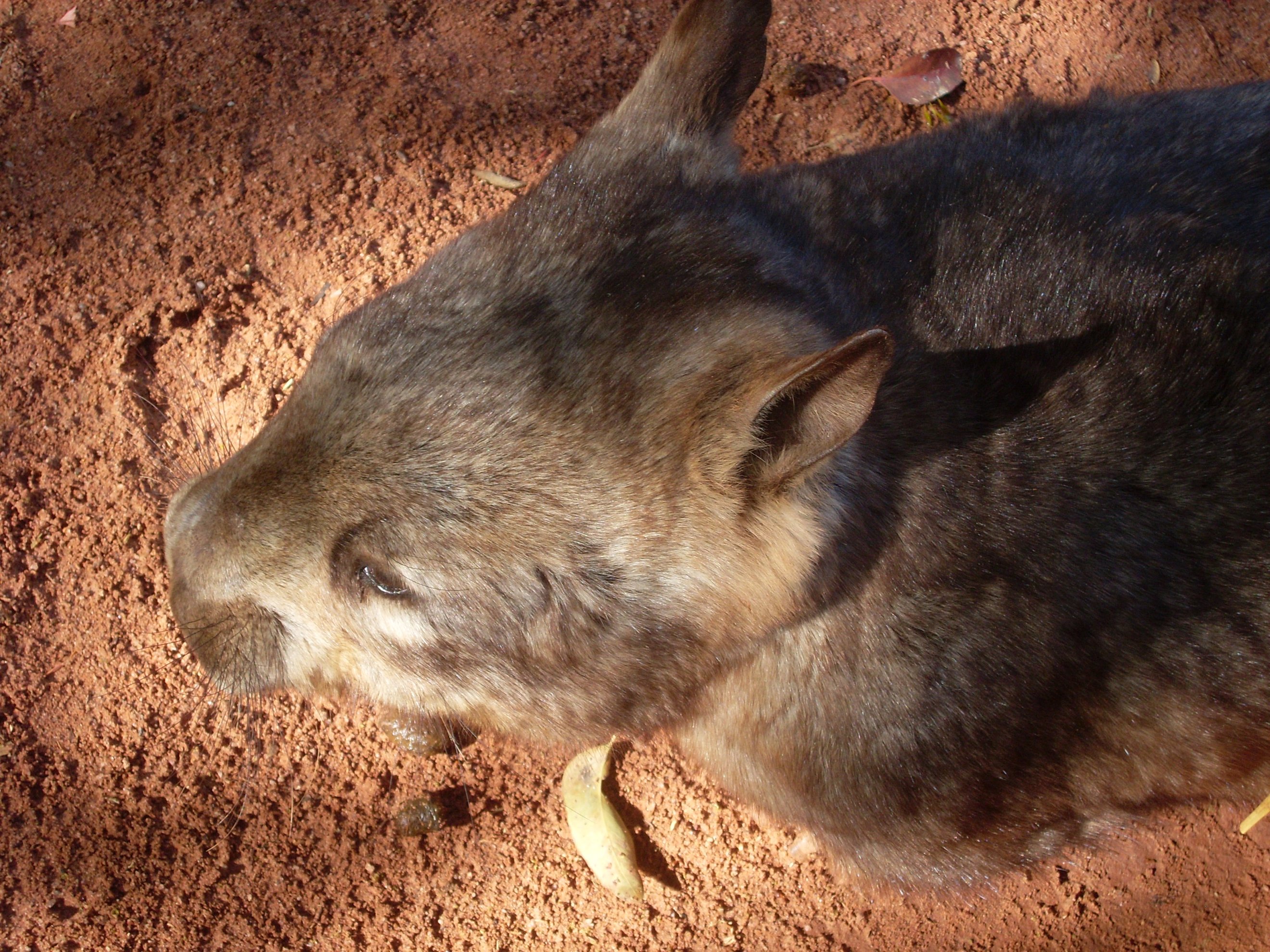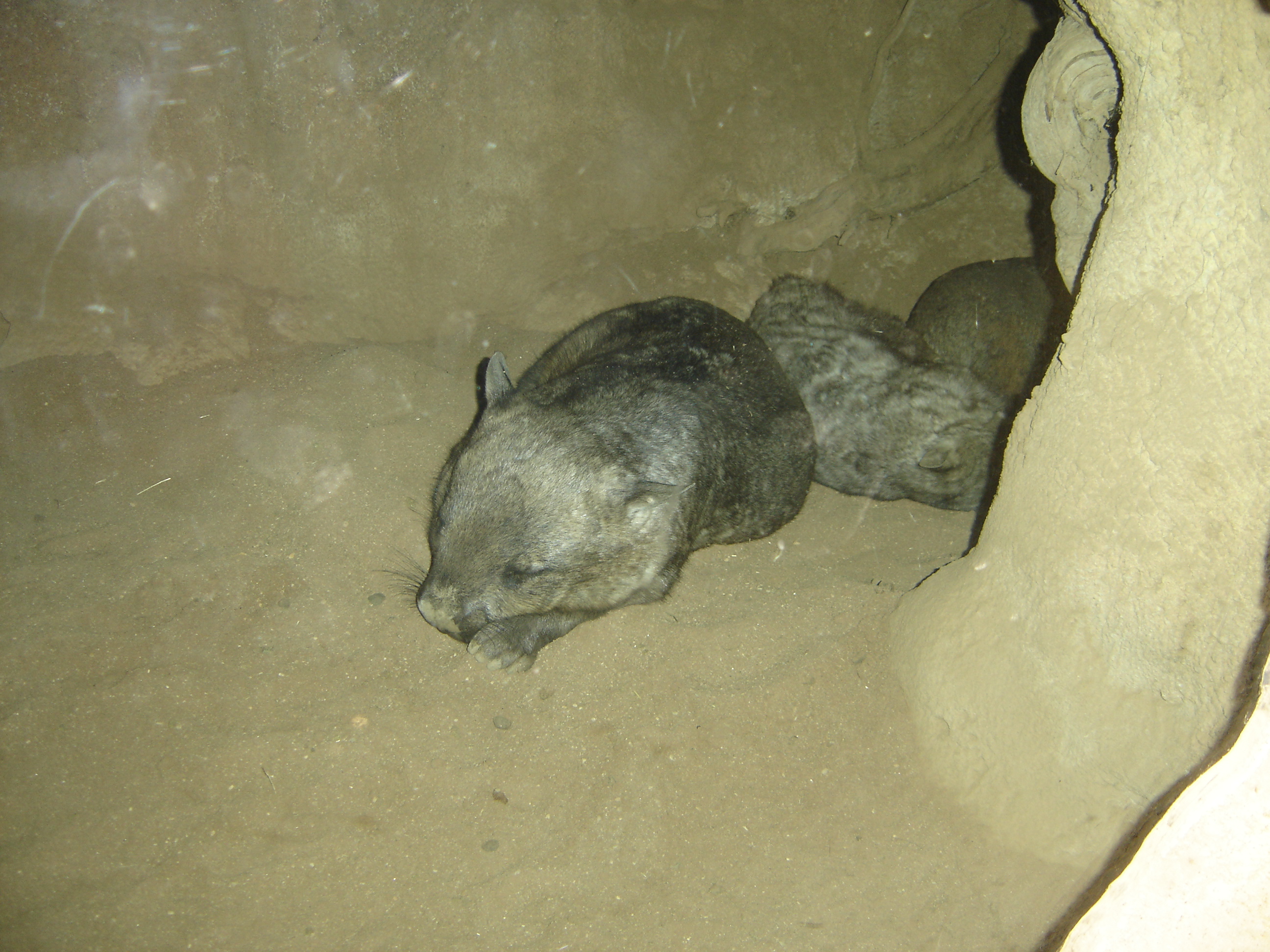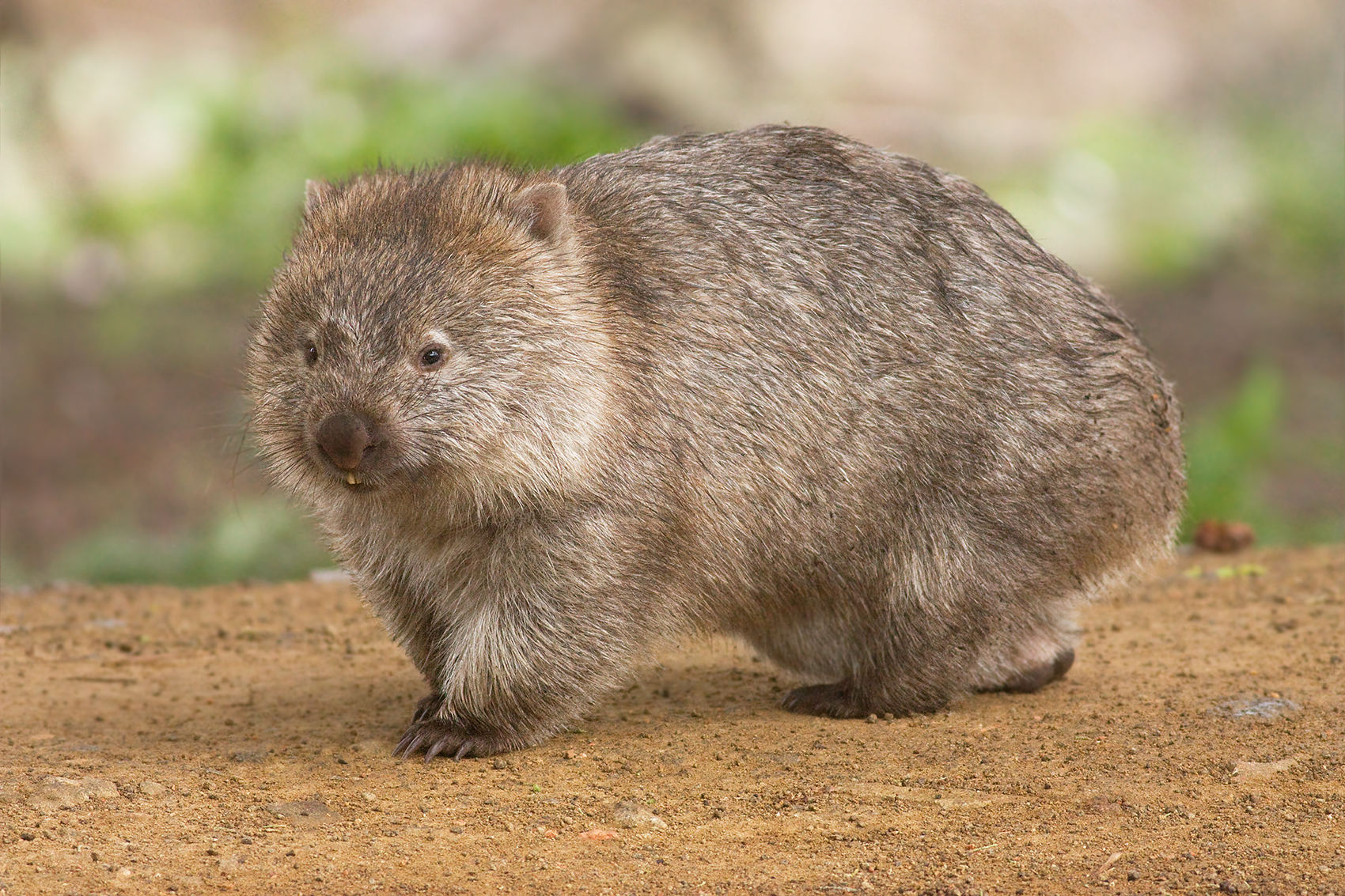|
Lasiorhinus
''Lasiorhinus'' is the genus containing the two extant hairy-nosed wombats, which are found in Australia. The southern hairy-nosed wombat is found in some of the semiarid to arid regions belt from New South Wales southwest to the South Australia-Western Australia border. The IUCN categorises it as Near Threatened. Conversely, the northern hairy-nosed wombat is categorised as Critically Endangered and only survives in a range within the Epping Forest National Park in Queensland, but formerly also existed in Victoria and New South Wales. Species The genus includes the following species: Fossils * †''Lasiorhinus angustidens ''Lasiorhinus'' is the genus containing the two extant hairy-nosed wombats, which are found in Australia. The southern hairy-nosed wombat is found in some of the semiarid to arid regions belt from New South Wales southwest to the South Australia ...'' (fossil) References {{Taxonbar, from=Q210106 Vombatiforms Mammals of Western Australia Mammal ... [...More Info...] [...Related Items...] OR: [Wikipedia] [Google] [Baidu] |
Northern Hairy-nosed Wombat
The northern hairy-nosed wombat (''Lasiorhinus krefftii'') or yaminon is one of three extant species of Australian marsupials known as wombats. It is one of the rarest land mammals in the world and is critically endangered. Its historical range extended across New South Wales, Victoria, and Queensland as recently as 100 years ago, but it is now restricted to one place, a range within the Epping Forest National Park in Queensland. With the species threatened by wild dogs, the Queensland Government built a -long predator-proof fence around all wombat habitat at Epping Forest National Park in 2002. In 2003, the total population consisted of 113 individuals, including only around 30 breeding females. After recording an estimated 230 individuals in 2015, the number was up to over 300 by 2021. Taxonomy English naturalist Richard Owen described the species in 1873. The genus name ''Lasiorhinus'' comes from the Latin words ''lasios'', meaning hairy or shaggy, and ', meaning nose. Th ... [...More Info...] [...Related Items...] OR: [Wikipedia] [Google] [Baidu] |
Southern Hairy-nosed Wombat
The southern hairy-nosed wombat (''Lasiorhinus latifrons'') is one of three extant species of wombats. It is found in scattered areas of semiarid scrub and mallee from the eastern Nullarbor Plain to the New South Wales border area. It is the smallest of all three wombat species. The young often do not survive dry seasons. It is the state animal of South Australia. Among the oldest southern hairy-nosed wombats ever documented were a male and a female from Brookfield Zoo just outside Chicago. Their names were Carver, who lived to be 34, and his mother, Vicky, who lived to be 24. In South Australia in 2010, a domesticated wombat named Wally was also reported as having reached the age of 34. Hamlet, a wombat at the Toronto Zoo, similarly died at age 34. Taxonomy English naturalist Richard Owen described the species in 1845. There are three synonyms: * ''Phascolomys lasiorhinus'' Gould, 1863 * ''Lasiorhinus mcoyi'' Gray, 1863 * ''Phascolomys latifrons'' Owen, 1845 Description Th ... [...More Info...] [...Related Items...] OR: [Wikipedia] [Google] [Baidu] |
Southern Hairy-nosed Wombat
The southern hairy-nosed wombat (''Lasiorhinus latifrons'') is one of three extant species of wombats. It is found in scattered areas of semiarid scrub and mallee from the eastern Nullarbor Plain to the New South Wales border area. It is the smallest of all three wombat species. The young often do not survive dry seasons. It is the state animal of South Australia. Among the oldest southern hairy-nosed wombats ever documented were a male and a female from Brookfield Zoo just outside Chicago. Their names were Carver, who lived to be 34, and his mother, Vicky, who lived to be 24. In South Australia in 2010, a domesticated wombat named Wally was also reported as having reached the age of 34. Hamlet, a wombat at the Toronto Zoo, similarly died at age 34. Taxonomy English naturalist Richard Owen described the species in 1845. There are three synonyms: * ''Phascolomys lasiorhinus'' Gould, 1863 * ''Lasiorhinus mcoyi'' Gray, 1863 * ''Phascolomys latifrons'' Owen, 1845 Description Th ... [...More Info...] [...Related Items...] OR: [Wikipedia] [Google] [Baidu] |
Lasiorhinus Angustidens
''Lasiorhinus'' is the genus containing the two extant hairy-nosed wombats, which are found in Australia. The southern hairy-nosed wombat is found in some of the semiarid to arid regions belt from New South Wales southwest to the South Australia-Western Australia border. The IUCN categorises it as Near Threatened. Conversely, the northern hairy-nosed wombat is categorised as Critically Endangered and only survives in a range within the Epping Forest National Park in Queensland, but formerly also existed in Victoria and New South Wales. Species The genus includes the following species: Fossils * †''Lasiorhinus angustidens ''Lasiorhinus'' is the genus containing the two extant hairy-nosed wombats, which are found in Australia. The southern hairy-nosed wombat is found in some of the semiarid to arid regions belt from New South Wales southwest to the South Australia ...'' (fossil) References {{Taxonbar, from=Q210106 Vombatiforms Mammals of Western Australia Mammal ... [...More Info...] [...Related Items...] OR: [Wikipedia] [Google] [Baidu] |
Vombatiforms
The Vombatiformes are one of the three suborders of the large marsupial order Diprotodontia. Seven of the nine known families within this suborder are extinct; only the families Phascolarctidae, with the koala, and Vombatidae, with three extant species of wombat, survive. Among the extinct families are the Diprotodontidae, which includes the rhinoceros sized ''Diprotodon'', believed to be the largest marsupials ever, as well as the "marsupial lions" Thylacoleonidae and "marsupial tapirs" Palorchestidae. "Vombatiformes" is neo-Latin for "wombat-shaped things", and took its name from its type family. The suborder Vombatiformes, with its closely related members and their compact body form, contrasts with the other two diprotodont suborders, the Macropodiformes: kangaroos, wallabies, and the quokka; and the Phalangeriformes: possums, including the gliders such as the wrist-winged gliders. The koala and wombats are believed by many biologists to share a common ancestor and to have di ... [...More Info...] [...Related Items...] OR: [Wikipedia] [Google] [Baidu] |
Australia
Australia, officially the Commonwealth of Australia, is a Sovereign state, sovereign country comprising the mainland of the Australia (continent), Australian continent, the island of Tasmania, and numerous List of islands of Australia, smaller islands. With an area of , Australia is the largest country by area in Oceania and the world's List of countries and dependencies by area, sixth-largest country. Australia is the oldest, flattest, and driest inhabited continent, with the least fertile soils. It is a Megadiverse countries, megadiverse country, and its size gives it a wide variety of landscapes and climates, with Deserts of Australia, deserts in the centre, tropical Forests of Australia, rainforests in the north-east, and List of mountains in Australia, mountain ranges in the south-east. The ancestors of Aboriginal Australians began arriving from south east Asia approximately Early human migrations#Nearby Oceania, 65,000 years ago, during the Last Glacial Period, last i ... [...More Info...] [...Related Items...] OR: [Wikipedia] [Google] [Baidu] |
IUCN Red List
The International Union for Conservation of Nature (IUCN) Red List of Threatened Species, also known as the IUCN Red List or Red Data Book, founded in 1964, is the world's most comprehensive inventory of the global conservation status of biological species. It uses a set of precise criteria to evaluate the extinction risk of thousands of species and subspecies. These criteria are relevant to all species and all regions of the world. With its strong scientific base, the IUCN Red List is recognized as the most authoritative guide to the status of biological diversity. A series of Regional Red Lists are produced by countries or organizations, which assess the risk of extinction to species within a political management unit. The aim of the IUCN Red List is to convey the urgency of conservation issues to the public and policy makers, as well as help the international community to reduce species extinction. According to IUCN the formally stated goals of the Red List are to provi ... [...More Info...] [...Related Items...] OR: [Wikipedia] [Google] [Baidu] |
Near Threatened
A near-threatened species is a species which has been categorized as "Near Threatened" (NT) by the International Union for Conservation of Nature as that may be vulnerable to endangerment in the near future, but it does not currently qualify for the threatened status. The IUCN notes the importance of re-evaluating near-threatened taxon at appropriate intervals. The rationale used for near-threatened taxa usually includes the criteria of vulnerable which are plausible or nearly met, such as reduction in numbers or range. Near-threatened species evaluated from 2001 onwards may also be ones which are dependent on conservation efforts to prevent their becoming threatened, whereas before this conservation-dependent species were given a separate category ("Conservation Dependent"). Additionally, the 402 conservation-dependent taxa may also be considered near-threatened. IUCN Categories and Criteria version 2.3 Before 2001, the IUCN used the version 2.3 Categories and Criteria ... [...More Info...] [...Related Items...] OR: [Wikipedia] [Google] [Baidu] |
Species
In biology, a species is the basic unit of classification and a taxonomic rank of an organism, as well as a unit of biodiversity. A species is often defined as the largest group of organisms in which any two individuals of the appropriate sexes or mating types can produce fertile offspring, typically by sexual reproduction. Other ways of defining species include their karyotype, DNA sequence, morphology, behaviour or ecological niche. In addition, paleontologists use the concept of the chronospecies since fossil reproduction cannot be examined. The most recent rigorous estimate for the total number of species of eukaryotes is between 8 and 8.7 million. However, only about 14% of these had been described by 2011. All species (except viruses) are given a two-part name, a "binomial". The first part of a binomial is the genus to which the species belongs. The second part is called the specific name or the specific epithet (in botanical nomenclature, also sometimes i ... [...More Info...] [...Related Items...] OR: [Wikipedia] [Google] [Baidu] |
John Edward Gray
John Edward Gray, FRS (12 February 1800 – 7 March 1875) was a British zoologist. He was the elder brother of zoologist George Robert Gray and son of the pharmacologist and botanist Samuel Frederick Gray (1766–1828). The same is used for a zoological name. Gray was keeper of zoology at the British Museum in London from 1840 until Christmas 1874, before the natural history holdings were split off to the Natural History Museum. He published several catalogues of the museum collections that included comprehensive discussions of animal groups and descriptions of new species. He improved the zoological collections to make them amongst the best in the world. Biography Gray was born in Walsall, but his family soon moved to London, where Gray studied medicine. He assisted his father in writing ''The Natural Arrangement of British Plants'' (1821). After being blackballed by the Linnean Society of London, Gray shifted his interest from botany to zoology. He began his zoologica ... [...More Info...] [...Related Items...] OR: [Wikipedia] [Google] [Baidu] |
.jpg)




